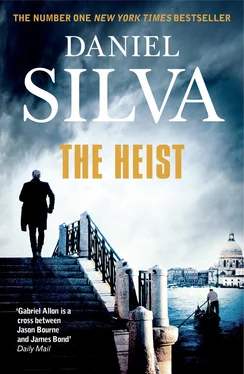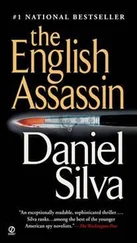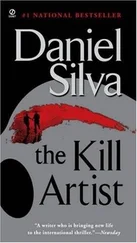Harper
An imprint of HarperCollins Publishers
1 London Bridge Street
London SE1 9GF
www.harpercollins.co.uk
First published in Great Britain by HarperCollins Publishers 2014
Copyright © Daniel Silva 2014
Cover design layout © HarperCollins Publishers 2014
Cover photographs © Nik Keevil/Arcangel Images (man); Lorenzo Montezemolo/Getty Images (Venice scene); Joe Beynon/Plain Picture (staircase); Shutterstock.com(sky)
Daniel Silva asserts the moral right to be identified as the author of this work
Designed by Leah Carlson-Stanisic
A catalogue record for this book is available from the British Library
This is entirely a work of fiction. The names, characters and incidents portrayed in it are the work of the author’s imagination. Any resemblance to actual persons, living or dead, events or localities is entirely coincidental.
All rights reserved under International and Pan-American Copyright Conventions. By payment of the required fees, you have been granted the non-exclusive, non-transferable right to access and read the text of this e-book on-screen. No part of this text may be reproduced, transmitted, down-loaded, decompiled, reverse engineered, or stored in or introduced into any information storage and retrieval system, in any form or by any means, whether electronic or mechanical, now known or hereinafter invented, without the express written permission of HarperCollins.
Ebook Edition © JULY 2014 ISBN: 9780007552276
Version: 2015-01-07
As always, for my wife, Jamie, and
my children, Nicholas and Lily
Most stolen art is gone forever … The lone bit of good news is that the better the painting, the better the odds it will someday be found.
— EDWARD DOLNICK, THE RESCUE ARTIST
He that diggeth a pit shall fall into it; and who so breaketh a hedge, a serpent shall bite him.
— ECCLESIASTES 10:8
Contents
Cover
Title Page
Copyright
Dedication
Epigraph
Preface
Part One: Chiaroscuro
Chapter 1: St. James’s, London
Chapter 2: Venice
Chapter 3: Venice
Chapter 4: Venice
Chapter 5: Venice
Chapter 6: Lake Como, Italy
Chapter 7: Lake Como, Italy
Chapter 8: Stockwell, London
Chapter 9: Stockwell, London
Chapter 10: Rue De Miromesnil, Paris
Chapter 11: Jardin Des Tuileries, Paris
Chapter 12: Montmartre, Paris
Part Two: Sunflowers
Chapter 13: San Remo, Italy
Chapter 14: Corsica
Chapter 15: Corsica
Chapter 16: Corsica
Chapter 17: Rue De Miromesnil, Paris
Chapter 18: Hyde Park, London
Chapter 19: Amsterdam
Chapter 20: Geneva
Chapter 21: Rue De Miromesnil, Paris
Chapter 22: ÎLe Saint-Louis, Paris
Chapter 23: Boulevard Saint-Germain, Paris
Chapter 24: Chelles, France
Chapter 25: Geneva
Part Three: The Open Window
Chapter 26: King Saul Boulevard, Tel Aviv
Chapter 27: King Saul Boulevard, Tel Aviv
Chapter 28: Petah Tikva, Israel
Chapter 29: Jerusalem
Chapter 30: Narkiss Street, Jerusalem
Chapter 31: Jerusalem
Chapter 32: King Saul Boulevard, Tel Aviv
Chapter 33: Linz, Austria
Chapter 34: King Saul Boulevard, Tel Aviv
Chapter 35: Munich, Germany
Chapter 36: Linz, Austria
Chapter 37: The Attersee, Austria
Chapter 38: The Attersee, Austria
Chapter 39: The Attersee, Austria
Chapter 40: The Attersee, Austria
Chapter 41: The Attersee, Austria
Part Four: The Score
Chapter 42: London
Chapter 43: Chelsea, London
Chapter 44: London—Linz, Austria
Chapter 45: Linz, Austria
Chapter 46: Heathrow Airport, London
Chapter 47: Linz, Austria
Chapter 48: King Saul Boulevard, Tel Aviv
Chapter 49: The Attersee, Austria
Chapter 50: The Attersee, Austria
Chapter 51: The Attersee—Geneva
Chapter 52: Hotel Métropole, Geneva
Chapter 53: Geneva
Chapter 54: Tel Aviv—Haute-Savoie, France
Chapter 55: Haute-Savoie, France
Chapter 56: Annecy, France
Chapter 57: Annecy, France
Part Five: One Last Window
Chapter 58: Venice
Chapter 59: Venice
Chapter 60: Venice
Chapter 61: Lake Como, Italy
Chapter 62: Brienno, Italy
Author’s Note
Acknowledgments
About the Author
Also Written by Daniel Silva
About the Publisher
ON OCTOBER 18, 1969, CARAVAGGIO’S Nativity with St. Francis and St. Lawrence vanished from the Oratorio di San Lorenzo in Palermo, Sicily. The Nativity , as it is commonly known, is one of Caravaggio’s last great masterworks, painted in 1609 while he was a fugitive from justice, wanted by papal authorities in Rome for killing a man during a swordfight. For more than four decades, the altarpiece has been the most sought-after stolen painting in the world, and yet its exact whereabouts, even its fate, have remained a mystery. Until now …
PART ONE
IT BEGAN WITH AN ACCIDENT, but then matters involving Julian Isherwood invariably did. In fact, his reputation for folly and misadventure was so indisputably established that London’s art world, had it known of the affair, which it did not, would have expected nothing less. Isherwood, declared one wit from the Old Masters department at Sotheby’s, was the patron saint of lost causes, a high-wire artist with a penchant for carefully planned schemes that ended in ruins, oftentimes through no fault of his own. Consequently, he was both admired and pitied, a rare trait for a man of his position. Julian Isherwood made life a bit less tedious. And for that, London’s smart set adored him.
His gallery stood at the far corner of the cobbled quadrangle known as Mason’s Yard, occupying three floors of a sagging Victorian warehouse once owned by Fortnum & Mason. On one side were the London offices of a minor Greek shipping company; on the other was a pub that catered to pretty office girls who rode motor scooters. Many years earlier, before the successive waves of Arab and Russian money had swamped London’s real estate market, the gallery had been located in stylish New Bond Street, or New Bondstrasse, as it was known in the trade. Then came the likes of Hermès, Burberry, Chanel, and Cartier, leaving Isherwood and others like him—independent dealers specializing in museum-quality Old Master paintings—no choice but to seek sanctuary in St. James’s.
It was not the first time Isherwood had been forced into exile. Born in Paris on the eve of World War II, the only child of the renowned art dealer Samuel Isakowitz, he had been carried over the Pyrenees after the German invasion and smuggled into Britain. His Parisian childhood and Jewish lineage were just two pieces of his tangled past that Isherwood kept secret from the rest of London’s notoriously backbiting art world. As far as anyone knew, he was English to the core—English as high tea and bad teeth, as he was fond of saying. He was the incomparable Julian Isherwood, Julie to his friends, Juicy Julian to his partners in the occasional crime of drink, and His Holiness to the art historians and curators who routinely made use of his infallible eye. He was loyal as the day was long, trusting to a fault, impeccably mannered, and had no real enemies, a singular achievement given that he had spent two lifetimes navigating the treacherous waters of the art world. Mainly, Isherwood was decent—decency being in short supply these days, in London or anywhere else.
Читать дальше












